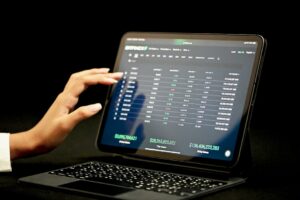The Pros and Cons of Using a Forex Trader Robot
Forex trading has become increasingly popular over the years, attracting both professional traders and individuals looking to make some extra money from home. With the advancement of technology, the use of forex trader robots has also gained momentum. These automated systems promise to take the emotion out of trading and make profitable trades on your behalf. However, like any tool, forex trader robots have their pros and cons. In this article, we will explore the advantages and disadvantages of using a forex trader robot.
Pros:
1. Emotionless Trading: One of the biggest advantages of using a forex trader robot is that it eliminates the emotional aspect of trading. Emotions like fear and greed can often cloud traders’ judgment, leading to impulsive and irrational decisions. A robot, on the other hand, operates solely based on predefined algorithms and rules, without being influenced by emotions. It can stick to the plan and execute trades without hesitation, potentially leading to more consistent results.
2. 24/7 Trading: Forex markets operate around the clock, which means that opportunities can arise at any time. Unlike human traders, forex trader robots can trade continuously without the need for breaks or sleep. This allows for potential profit generation even when the trader is away from the computer or resting. It also ensures that no trading opportunities are missed due to human limitations.
3. Backtesting and Optimization: Forex trader robots often come with backtesting and optimization capabilities. Backtesting allows users to test the robot’s performance on historical data, giving them an idea of how it would have performed in the past. This can help in fine-tuning the robot’s settings and identifying potential weaknesses. Optimization, on the other hand, allows users to adjust the robot’s parameters to find the optimal combination for maximum profitability. These features can save traders a significant amount of time and effort in manual testing and analysis.
4. Speed and Efficiency: Forex trader robots can execute trades at lightning-fast speeds, taking advantage of even the smallest market movements. They can monitor multiple currency pairs simultaneously, analyze market conditions, and execute trades within milliseconds. This speed and efficiency can be crucial in a fast-paced market where prices can change rapidly. Using a robot can help traders capture opportunities that manual trading may miss.
Cons:
1. Lack of Adaptability: While forex trader robots are designed to follow predefined algorithms, they may struggle to adapt to sudden market changes or unforeseen events. If market conditions deviate significantly from what the robot’s programming anticipates, it may not perform as expected. Human traders, on the other hand, can quickly adjust their strategies and adapt to new market conditions. This adaptability allows them to take advantage of changing trends and potentially avoid losses.
2. Dependence on Programming: The performance of a forex trader robot is directly tied to its programming. If the robot’s algorithms are not well-designed or if they are based on flawed assumptions, it may lead to poor trading decisions. Traders who rely solely on the robot’s performance without understanding its underlying logic may find themselves in trouble. It is essential for users to have a thorough understanding of the robot’s strategy and parameters to ensure its effectiveness.
3. Limited Market Insight: Forex trader robots operate solely based on technical indicators and predefined rules. They lack the ability to incorporate fundamental analysis or news events into their decision-making process. While technical analysis can be effective, it is essential to consider fundamental factors that may impact market movements. Human traders can analyze news events and economic data to make more informed trading decisions, which may not be possible for a robot.
4. Over-optimization and Curve Fitting: Backtesting and optimization, as mentioned earlier, can be valuable tools for improving a forex trader robot’s performance. However, there is a risk of over-optimization and curve fitting, where the robot’s parameters are excessively adjusted to fit historical data. This can lead to a robot that performs exceptionally well in backtests but fails to deliver similar results in live trading. Traders must be cautious not to rely solely on optimized results and consider the robot’s performance in real-time market conditions.
In conclusion, forex trader robots can provide several advantages to traders, including emotionless trading, 24/7 availability, and backtesting capabilities. However, they also come with drawbacks, such as limited adaptability, dependence on programming, and the inability to incorporate fundamental analysis. Traders should carefully consider their trading goals and preferences before deciding to use a forex trader robot. It is essential to understand the robot’s strategy, test it thoroughly, and monitor its performance to ensure it aligns with your trading objectives.





